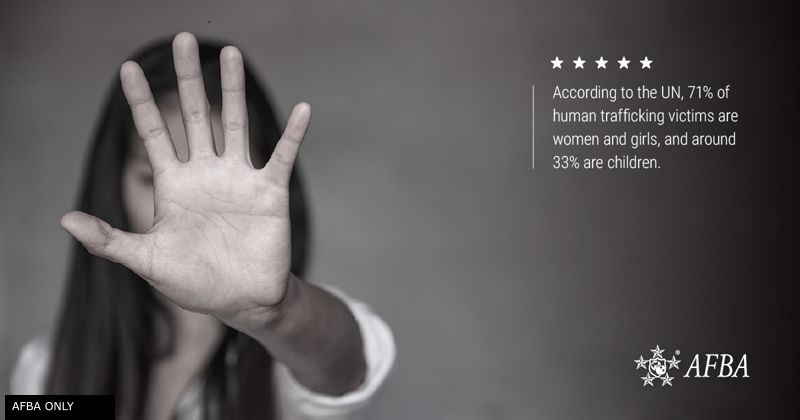Around the world on Nov. 25, first responders, humanitarian aid groups and activists come together in recognition of the International Day for the Elimination of Violence Against Women. An important part of this observance is raising awareness about actions that perpetuate violence against women and girls. One of these is human trafficking.
First responders play a vital role in identifying, protecting and supporting human trafficking victims. Let's examine what first responders can do to help stop human trafficking.
Who are the victims?
Due to the illegality of human trafficking, it's difficult to get an accurate number of the number of victims impacted, although experts estimate that between 18,000 and 20,000 people are trafficked into the U.S. each year.
While human trafficking can impact anyone, regardless of age, race, gender identity, sex, ethnicity, nationality, immigration status or socioeconomic class, women are the most common victims. The United Nations Office on Drugs and Crime (UNODC) reported that 71% of human trafficking victims are women and girls, while around 33% are children.

Identifying the signs and alerting authorities
People working on the front lines, such as law enforcement officers, emergency medical technicians (EMTs) or hospital staff, are in a unique position to be able to identify these instances and report them to the proper authorities.
For example, the Department of Homeland Security created the Blue Campaign, an initiative that aims to foster collaboration between first responders and non-government and government entities.
The Blue Campaign noted that, since human trafficking often hides in plain sight, it's important to know how to recognize the signs of a potential victim. While many people might associate trafficking with the sex trade, victims are also forced to work in private residences, on farms, in the hospitality industry and in the health and beauty services industry.
Some red flags to watch for include, but are not limited to:
- Work conditions: A victim of human trafficking may be experiencing verbal or physical abuse from a boss, working excessively with minimum or no pay or living where they work. They might also be forced into illegal work, such as fraudulent activities or commercial sex acts against their will.
- Behavior: A victim may act fearful, agitated, nervous or anxious around a particular person. They might defer answers to this person, or let the other person speak for them.
- Physical state: In addition, a human trafficking victim might show signs of physical or sexual abuse, such as bruises, cuts and other injuries they may not explain. They might also appear malnourished, sleep deprived, lacking medical care or living without essential personal possessions.
Conversely, some signs of a potential trafficking offender include, but are not limited to:
- Restrictions: A trafficker might place severe restrictions and limitations on the actions, movements and personal time of the person they have trafficked. For instance, they might prevent this individual from seeing family or friends, disallow access to a telephone or social media or stopping them from going to their regular work or school.
- Threats: A human trafficking offender might make threatening statements to a victim or constantly keep the victim under a watchful eye.
- Unsafe housing: A trafficker might house their victims in unsafe and unsanitary conditions. This also includes housing a large group of people in one place with poor conditions and limited space.
No single one of these examples represents definitive proof of human trafficking, but these are often common indicators that it is happening. If one of these signs does show up during an ambulance ride, hospital visit or emergency response call, it's important that first responders take a moment to ask follow-up questions and survey the situation more carefully.
If, after more scrutiny, you suspect someone is a victim or a perpetrator of human trafficking, contact the National Human Trafficking Hotline to connect with services and support or to make a report.

